The Fishing Obsessive with 250,000 Hooks in His Garage
For some fishermen, the lure of the lure is too strong to resist.
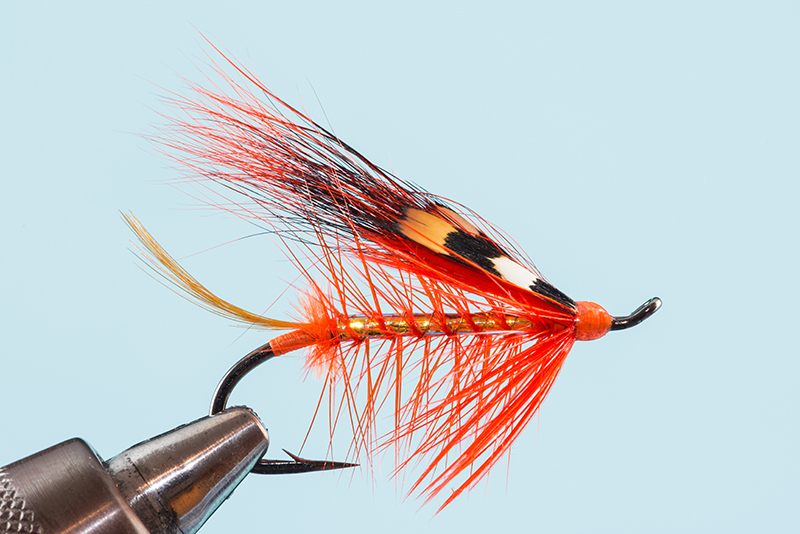
Salmon fly tied by Chris Reeve for the Art of the Atlantic Salmon Fly Symposium in Seattle, June 2016. (Photo: Courtesy Chris Reeve)
Thirty years ago, Chris Reeves broke his leg, which is why today he has a double garage full of about 250,000 fishing hooks and 10,000 pounds of animal pelts, feathers, thread and other doodads.
A friend thought he’d enjoy making a fishing rod while he was laid up, and he did. He took up the sport and started making flies, the colorful lures that bob from the end of a fisherman’s line.
“The first thing I thought was that flies were very expensive so I ought to learn to tie my own,” says Reeves. “That turned out to be a huge mistake.”
Reeves is now a professional fly tier, teaches classes in fly tying and is the general secretary of the Fly Dressers Guild in the United Kingdom where he lives. The guild, which holds meetings, classes, auctions and competitions, now has about 1,500 members and 38 branches devoted to the craft of fly-tying.

Chris Reeve, tying flies. (Photo: Courtesy Chris Reeve)
For many fishermen, a fly is something you buy at a store, but for a select group, it’s something of an obsession—even a business. A fly is a hook with natural or synthetic materials attached to it that is used to imitate an insect that fish eat. A simple fly can be made in just over a minute, but some—with 50 to 60 steps—can take half an hour or longer. Craftsmen work from old patterns (some that date back to the early days of the sport) and also invent their own. They have names such as Beadhead Kaufman’s Rubberleg Stonefly, Fly Formerly Known as Prince, and even Crystal Meth. Tying has morphed into an art of its own; there are makers who craft outrageous flies with butterfly wings, pheasant feathers, Arctic fox hair, exotic bird feathers and lurex, the synthetic material that once made disco pants shiny. Basic flies cost a couple dollars or less, but art flies can cost hundreds and are not destined for a trout’s mouth but proudly displayed by collectors.

“Diadem”, by Stuart Hardy. (Photo: Courtesy Stuart Hardy)
“You’ve got all these different sizes, all these different colors, four to five different stages for twelve different insects, you do that math and you’re talking hundreds of thousands of different ways you can imitate it, and then you add on top that you have all these materials you can have, you add in people’s creativity and it just goes nuts,” says Allen Gardner, who runs The Catch and the Hatch, a Colorado-based online fishing school and fly shop.
A fly obsession means that some pack a bit heavier when they depart for a fishing trip. Gardner often carries around five to six boxes with 150 flies each. Reeves admits to feeling insecure with “just one box” and carries a “damn great big workman’s toolbox full to the top with fly boxes”.
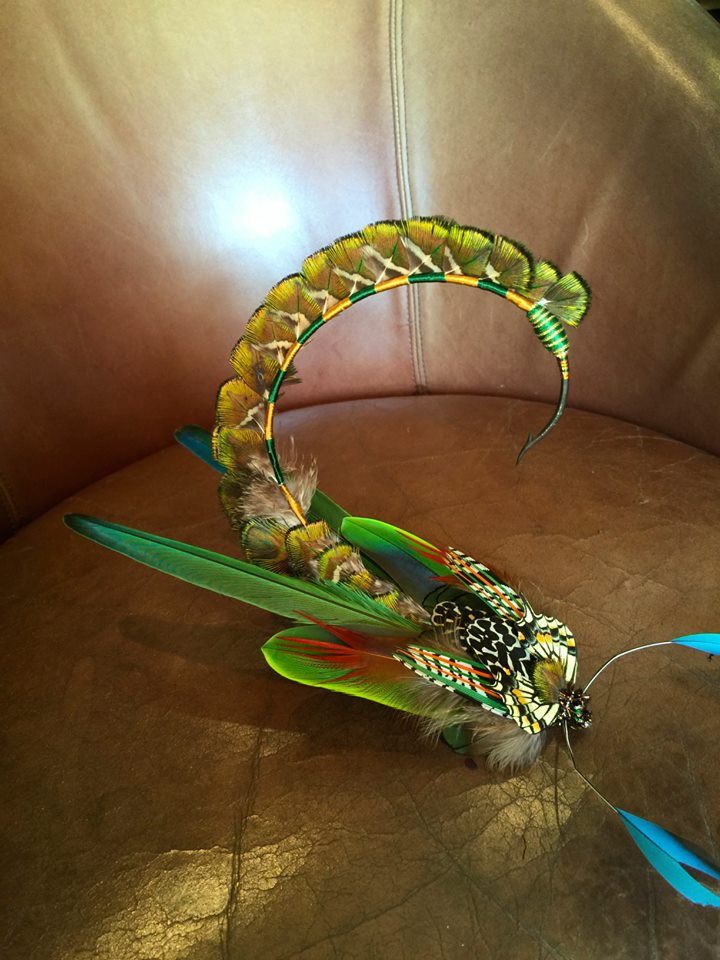
“The Scorpion”, by Stuart Hardy. (Photo: Courtesy Stuart Hardy)
Gardner has seen flies made with fluff foraged from tennis balls and known fishermen to rummage through garbage on the hunt for materials. He himself trimmed the hair from his dog, a Labrador/Catahoula mix, to make a caddis, a winged moth-like insect that inspires dramatic flies that look something like a cross between a porcupine and a lion. Wild animals often supply the goods: Moose, deer, elk and birds. For some fishermen it’s about closing a loop, according to Gardner. They hunt the animal, make a fly from its remains and catch the fish, possibly with a handmade rod. (And then they often release the fish–catch and release is common, sometimes because of regulations and also because fishermen want to keep the supply of fish robust.)
Obsession over materials drives some enthusiasts to scour auctions for careworn Victorian skinmounts.
“If somebody’s got a stuffed parrot that is falling apart,” says Reeves. “Rather than throw it in the bin we’ll buy it and swap the feathers with other tiers.”

A fly in the shape of a zebra midge, by Allen Gardner. (Photo: Courtesy Allen Gardner/The Catch in the Hatch)

Another of Allen Gardner’s creations, a Pale Morning Dun. (Photo: Courtesy Allen Gardner/The Catch in the Hatch)
The appeal of a very old parrot feather to a modern fish is questionable, admits Reeves, who favors making simple flies from things such as the net bags grocery store fruit is sold in. In Victorian times, adding exotic materials to ones fly was a way of keeping up with the Joneses.
“They all claimed wondrous properties for these feathers,” says Reeves. “You’ll catch more salmon if you have the crest feather from a scarlett cock-of-the-walk or a bird-of-paradise or something like that.”
The hunger for specialty materials is such that breeders have begun raising animals specifically for the sport, a practice refined over 40 years ago by Henry Hoffman, a pioneering fly tier and farmer in Oregon who began raising chickens with especially long, shiny feathers ideal for fishing.
“From a business side, people who make flies are really trying to catch fly fisherman and not fish,” says Gardner. “So they’re building up a pattern that looks really cool or unique.”
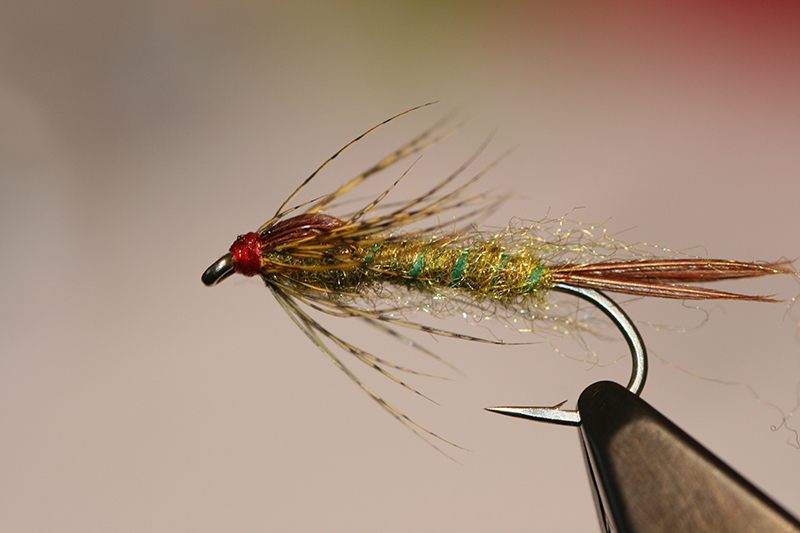
Chris Reeves’ Damsel Fly nymph. (Photo: Chris Reeves)

“The Dukes”, from Stuart Hardy. (Photo: Courtesy Stuart Hardy)
This flare for the unusual is obvious in the work of artistic tiers. There’s the painter turned fly tier Paul Rossman, whose flamboyant creations of fluorescent feathers, gleaming thread and sparkly pops of gold look cocktail attire ready. Pat Cohen, whose website is “Super Fly”, has a decidedly more edgy feel; he’s the one who offers a Crystal Meth fly. Among his display flies is the $40 “Punk Rocker”, an electrically colored fish-shaped fly with, yes, a mohawk. Stuart Hardy ties lavish flies made with colorful feathers from pre-1947 taxidermy specimens, Japanese thread made from real gold, and ethically sourced butterfly wings. In addition to displaying them, his patrons wear his elaborate creations as brooches.
Hardy learned tying as a Boy Scout, but only started making artistic flies about five and a half years ago. A leadership consultant, who splits his time between the UK and Spain when not traveling, says life on the road influences his work.
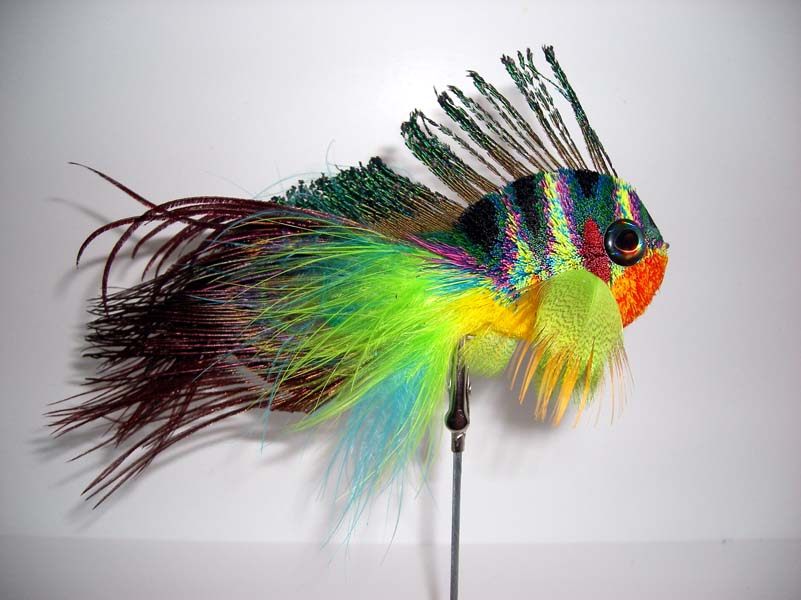
The ‘Punk Rocker’ display fly by Pat Cohen. (Photo: Courtesy Pat Cohen)
“As a mountain guide, kayaker and expedition leader, my office was the wild places of the world, and a multitude of color, texture, cultures and extreme experiences assaulted my senses on a daily basis,” Hardy wrote in an email to Atlas Obscura. It turns out the vagabond lifestyle is a good one for a fly tier—Hardy uses his lonely hotel stays and long flights to chase down materials online.
Sometimes, a penchant for rare goods can backfire. A few years ago, tiers found themselves in a bind when hipsters went crazy for feathers in their hair. Suddenly, hairdressers started paying top dollar for plumage and fly tiers fretted as prices skyrocketed. But Reeves sensed an opportunity, and for a brief period, found salons more lucrative than fisherman. He flipped four $20 feather caches for $500 each.

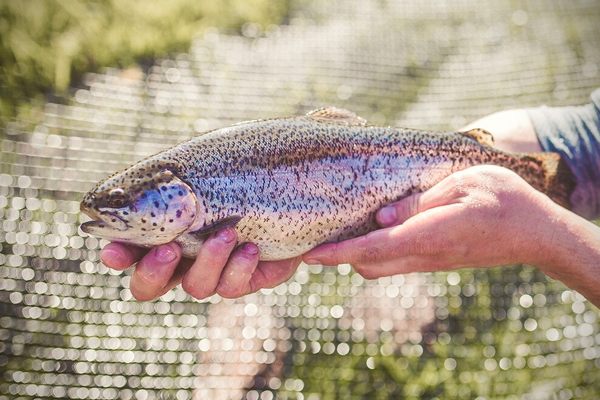








Follow us on Twitter to get the latest on the world's hidden wonders.
Like us on Facebook to get the latest on the world's hidden wonders.
Follow us on Twitter Like us on Facebook